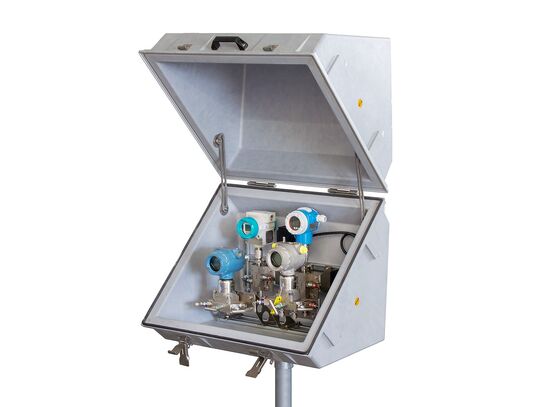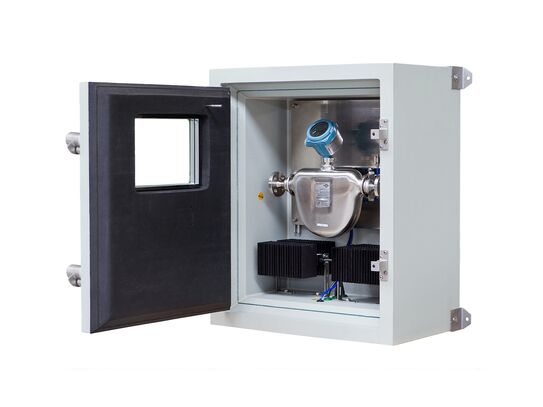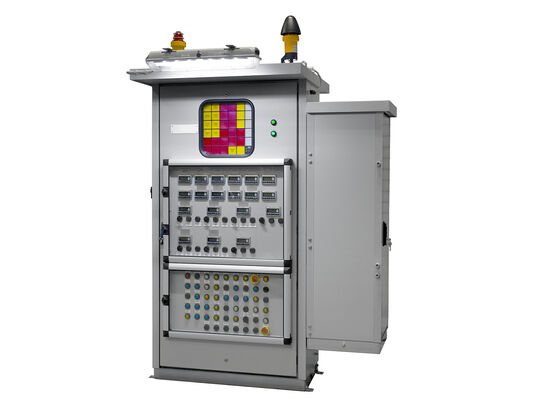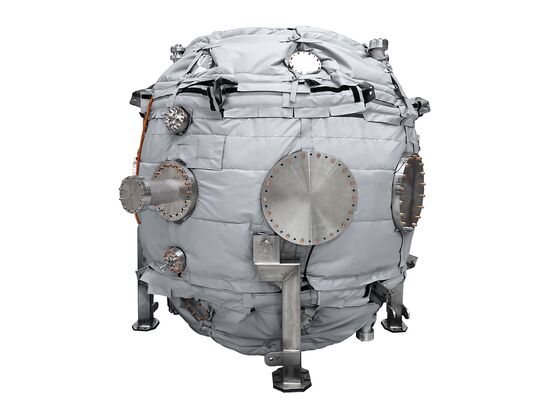Active, passive and hybrid cooling for shelters
Individual and efficient cooling solutions for hot climate conditions
Extremely hot climate conditions are a great challenge for plant designers and constructors. In addition to the required protection (mechanical protection, explosion protection, ...), instrumentation may or can only be operated within a certain temperature range. Shelters with integrated cooling solutions provide a remedy. Thanks to years of experience in this field, INTERTEC can offer you the best solution for this situation in the form of perfectly matched complete systems.
Active cooled shelters (ACS)
INTERTEC offers a variety of active cooling units for applications where electronics and instrumentation are exposed to high temperatures. By combining the cooling system with our proven GRP enclosure, which has very low thermal conductivity, you can achieve the optimum of efficiency and protection for your application, even in hazardous areas.
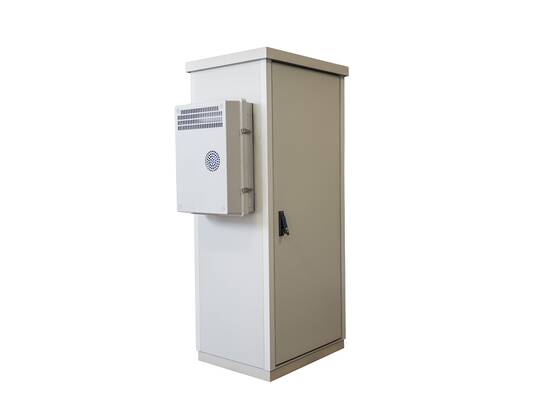
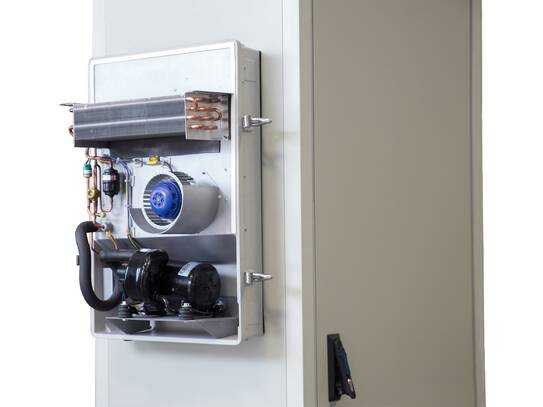


Passive cooled enclosures (PCE), cabinets (PCC) and shelters (PCS)
Pipelines and supply systems often run through remote, hot and/or dry areas, such as deserts. A reliable power supply is not always available there. The deployed systems, which are used for monitoring and control, usually have low energy consumption and can be powered solely by solar cells with backup batteries.
In the shade, maximum temperatures of up to 60°C can occur - and even much higher ones in direct sunlight. Without any form of cooling, the temperatures in shelters and housings can sometimes exceed 80°C. Under these conditions, electronic devices no longer function reliably and thermal aging reduces their service life. The design of suitable protective devices in conjunction with conventionally available cooling systems often poses a major challenge for planners.
Active air conditioning systems, such as compressor and absorber air conditioners, require too much energy to function with solar cells. The relative lack of efficiency, problems with battery life in hot climates and maintenance that is expensive and difficult to perform in remote locations therefore often require complex and costly protection solutions.
INTERTEC offers an efficient, maintenance-free and comparatively cost-effective solution for this: passive cooling.
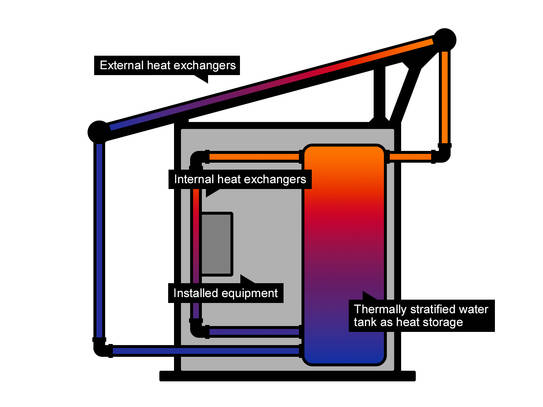
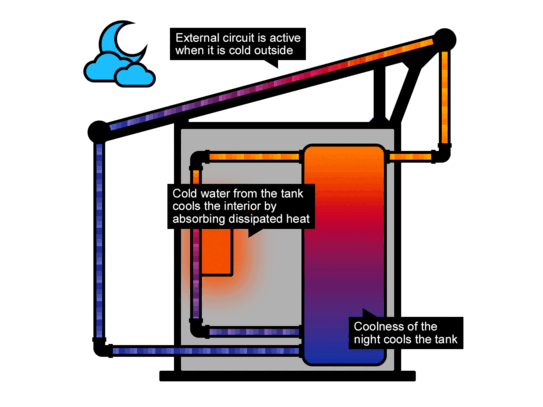
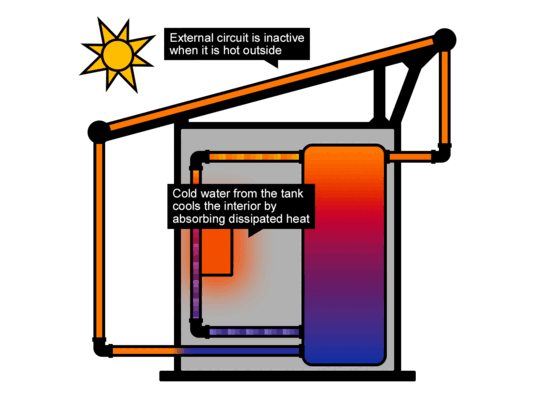
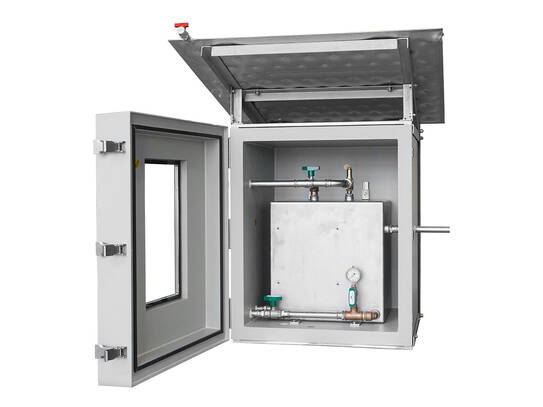
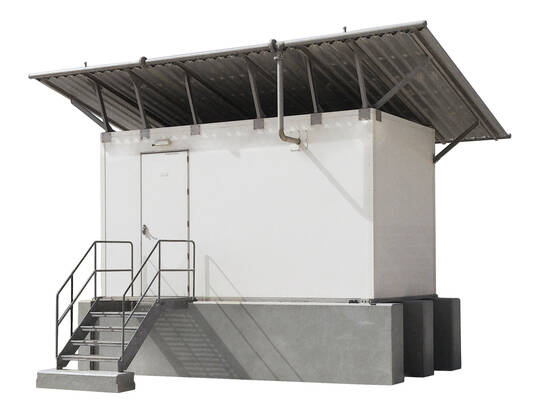
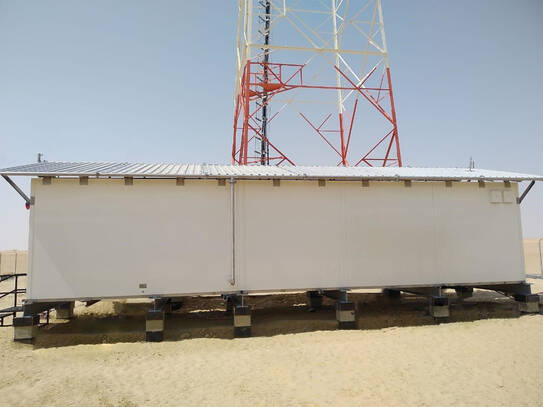






Passive cooling works by taking advantage of the large temperature fluctuations of the desert between day and night. Water as a storage medium absorbs the cold of the night, which is used to cool the interior during the day. Through natural convection (based on the physical principle of the thermosiphon) the water flows through the system and its heat exchangers. As there are no moving parts, wear and tear and the risk of failure is extremely low. A passively cooled shelter is a holistic system consisting of enclosures with insulation, solar shading, external and internal heat exchangers, and thermal storage. Depending on the on-site conditions and the thermal power loss of the instrumentation to be compensated, a separate design of the protective solution must be made for each application.
Further information can be found in our Documentation Portal.
Hybrid cooled shelters (HCS)
Our Hybrid cooled shelters combine the best of both worlds. In principle, they function like passively cooled shelters, but if required, they can be supplemented by an active cooling unit to cope with extreme temperature peaks.
If the temperature is below a certain threshold temperature, the passive cooling circuit alone provides the necessary cooling. At higher temperatures, the electrically operated water cooler HYBRICOOL is activated to cool the water tank/energy buffer. Should the active cooler fail, the passive cooling can still keep the temperature of the electronic equipment below a specified maximum value.
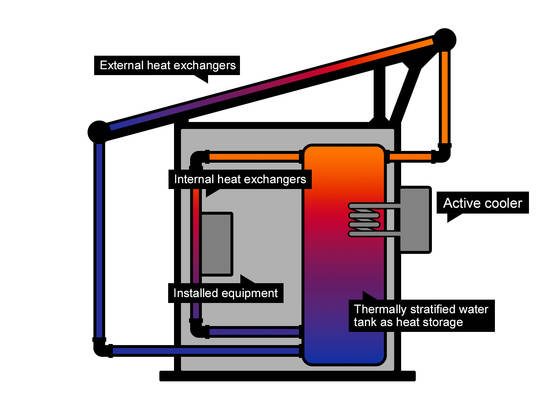
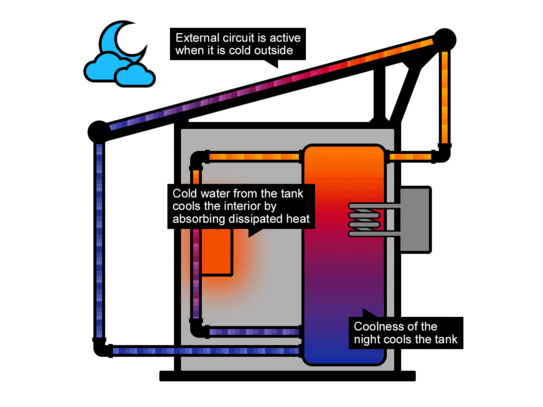
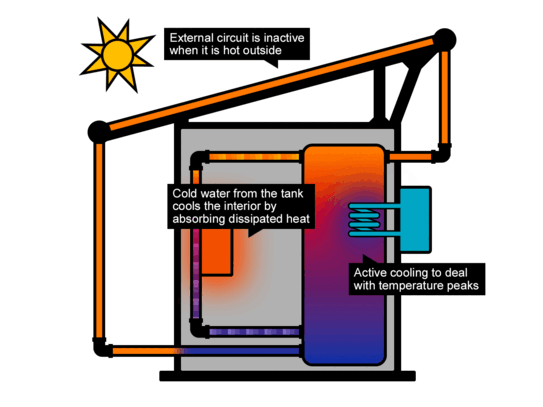
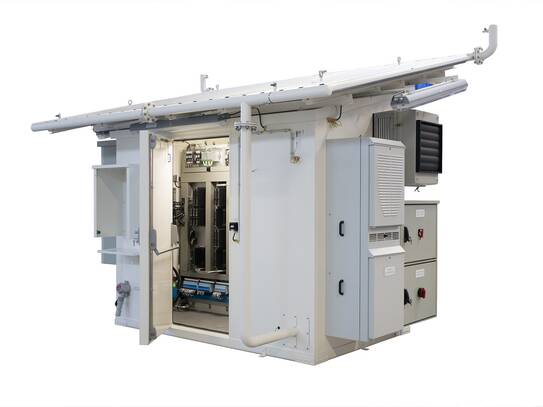




Other solutions
Let’s talk about your application!
Our experts can provide you with the best solution individually tailored to your situation.



